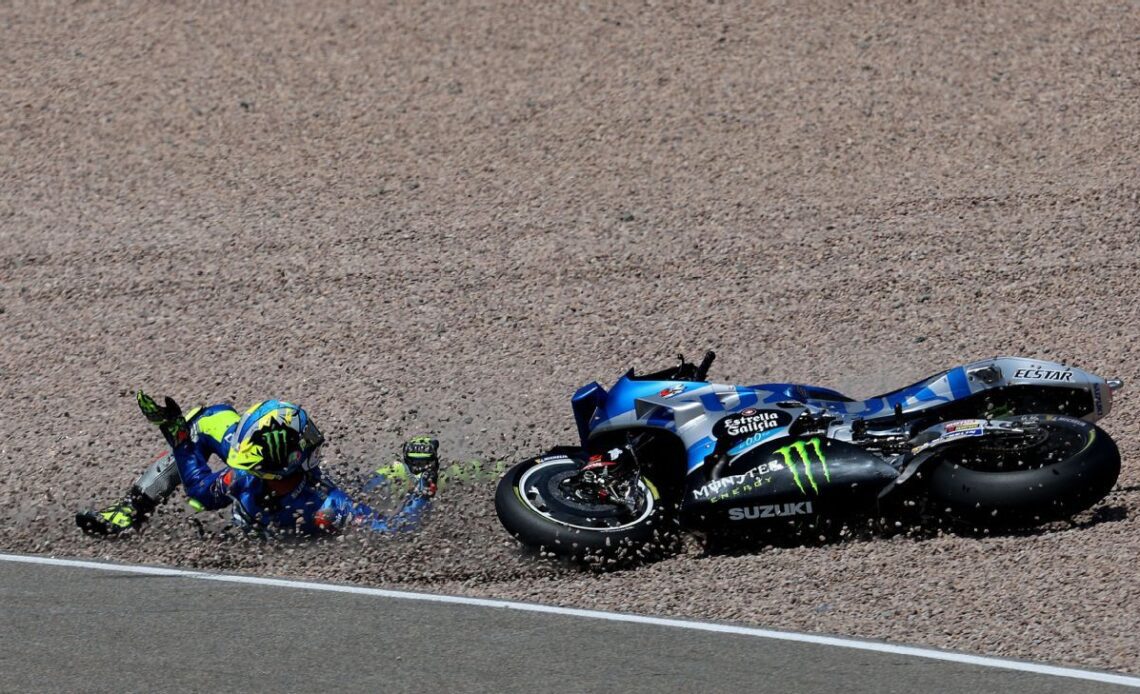The U.S. is witnessing something of a renaissance in motorsport. Call it the “Drive to Survive” effect, but Formula One isn’t the only series seeing a resurgence in television audiences. Last season was the most watched in IndyCar history.
Ask most of these newly converted race fans about MotoGP, though, and that enthusiasm quickly pivots to anxiety. Who can blame them? Riders reach 220 miles per hour down the straights, they drag their elbows over the pavement in the corners, and all that separates them from grievous injury is little more than a millimeter of kangaroo leather.
“F1 and MotoGP both come from, let’s say, dangerous backgrounds,” Ducati Lenovo rider Jack Miller told ESPN at the San Marino and Rimini Riviera Grand Prix at Misano earlier this month. “At the end of the day, there’s danger involved in anything we do, whether it be driving your car to work in the morning or cycling, whatever.”
“The majority of the time now, as you can see, we can get up, walk away, the injuries are a lot less than what they used to be. It used to be at least one [big crash] a weekend, and now maybe one a season — maybe.”
– Watch Formula One and the W Series all season long on ESPN
– Don’t have ESPN? Get instant access
What the sport used to be, as Miller alluded to and like most any racing series 30-plus years ago, was dangerous. In the past 30 years, seven riders in MotoGP and its support classes died as a result of injuries suffered in crashes. In the 30 years before that, 59 perished — nearly a third taking place at the Isle of Man, a circuit situated on public roads that the world championship last visited in 1976.
For context, in F1 and its feeder series like Formula Two and Formula Three, three drivers have died of injuries suffered in crashes in the past 30 years.
When Madrid-based Dorna Sports became organizer of the sport in 1991, it and the Federation Internationale de Motocyclisme (FIM) set out to improve safety. Street and temporary circuits were soon removed from the calendar, run-off areas and gravel traps were installed or enlarged to minimize the chances of a fallen rider hitting walls, trees or other obstacles.
Today, Dorna and the FIM use software developed in conjunction with the University of Padova that calculates exactly how much run-off room is needed, both in asphalt and gravel, to ensure a minimum safety…
Click Here to Read the Full Original Article at www.espn.com – RPM…

